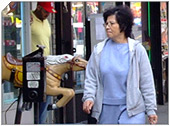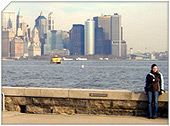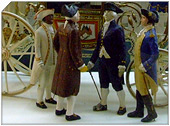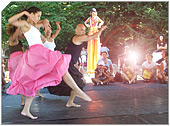New York City Farm Colony, Staten Island, New York City
|
Getting Started
Index
NYC Neighborhoods
Manhattan
Brooklyn
Queens
Bronx
Staten Island
NYC Icons
Chrysler Building
Flatiron Building
Empire State Building
Safe NYC
NYPD
FDNY
NYC Weather
NYC Climate
NYC Weather Forecast
Winter Season
Spring Season
Summer Season
Fall Season
NYC History & Politics
New York City History
Tammany Hall and Politics
New York City Politicians
New York City Personalities
Culture of Gotham City
Culture of the city
Cultural diversity
City in popular culture
|
| New York City Farm Colony |
The New York City Farm Colony was a poorhouse on the New York City borough of Staten Island, one of the city's five boroughs. It was located across Brielle Avenue from Sea View Hospital, on the edge of the Staten Island Greenbelt.
Part of the town of Castleton from the 1680s onward, the land was taken over by the government of Richmond County in 1829 and the Richmond County Poor Farm was established thereon. When Staten Island became a borough of New York City in 1898, the city assumed responsibility for the property and redesignated it the New York City Farm Colony, although it was sometimes also referred to as the Staten Island Farm Colony. In 1915, its administration was merged with that of Sea View Hospital, which had been set up with the expressed purpose of treating tuberculosis (it is now a city-run nursing home), under the new name of Sea View Farms.
Jurisdiction over the site was transferred in 1924 to the city's Homes for Dependents agency, which lifted the requirement that all residents of the colony had to work - with most of the work involving the cultivation of many varieties of fruits and vegetables, and at various times even grains such as wheat and corn; these crops fed not only the colony's residents but met the needs of other city institutions as well.
Until the 1930s, many if not most of the farm colony's residents were elderly, and at times numbered as many as 2,000; this number steadily declined after the Social Security system was adopted on the federal level in the United States (although noted photographer Alice Austen actually lived there for a brief period in the early 1950s), and the programs of the Great Society implemented in the 1960s further depleted its ranks, leading to the facility being closed in 1975.
Since its closure, the Farm Colony site has been the focus of debate over land use. In 1980 the city attempted to sell the property to developers, but environmentalists and many Staten Islanders resisted the sale. As a result, in 1982, the city's Department of General Services was given authority over the land; this agency in turn transferred 25 acres (101,000 m²) to the New York City Department of Parks and Recreation, which annexed the section to the Greenbelt. The remaining 70 acres (283,000 m²) at the site were officially designated a city landmark in 1985; many buildings remain standing at the colony, but have fallen into disrepair and have also been subjected to vandalism.
In 1983, a Babe Ruth League baseball diamond was built on Farm Colony land; a second field was added in 2001.
|
New York City Search
Quick NYC
|
|
|
 How safe is New York City?
How safe is New York City? Contrary to popular belief, the City consistantly ranks in the top ten safest large cities in the United States. The NYPD is the largest municipal police force in the world and has it's own Movie/TV Unit. |

New York has a humid continental climate resulting from prevailing wind patterns that bring cool air from the interior of the North American continent. New York winters are typically cold with moderate snowfall.  New York Weather Forecast New York Weather Forecast |

New York's two key demographic features are its density and diversity. The New York City metropolitan area is home to the largest Jewish community outside Israel. It is also home to nearly a quarter of the nation's South Asians, and the largest African American community of any city in the country.  Ethnic composition Ethnic composition |

New York Newspapers
 
|



 New York Weather Forecast
New York Weather Forecast
 Ethnic composition
Ethnic composition

















